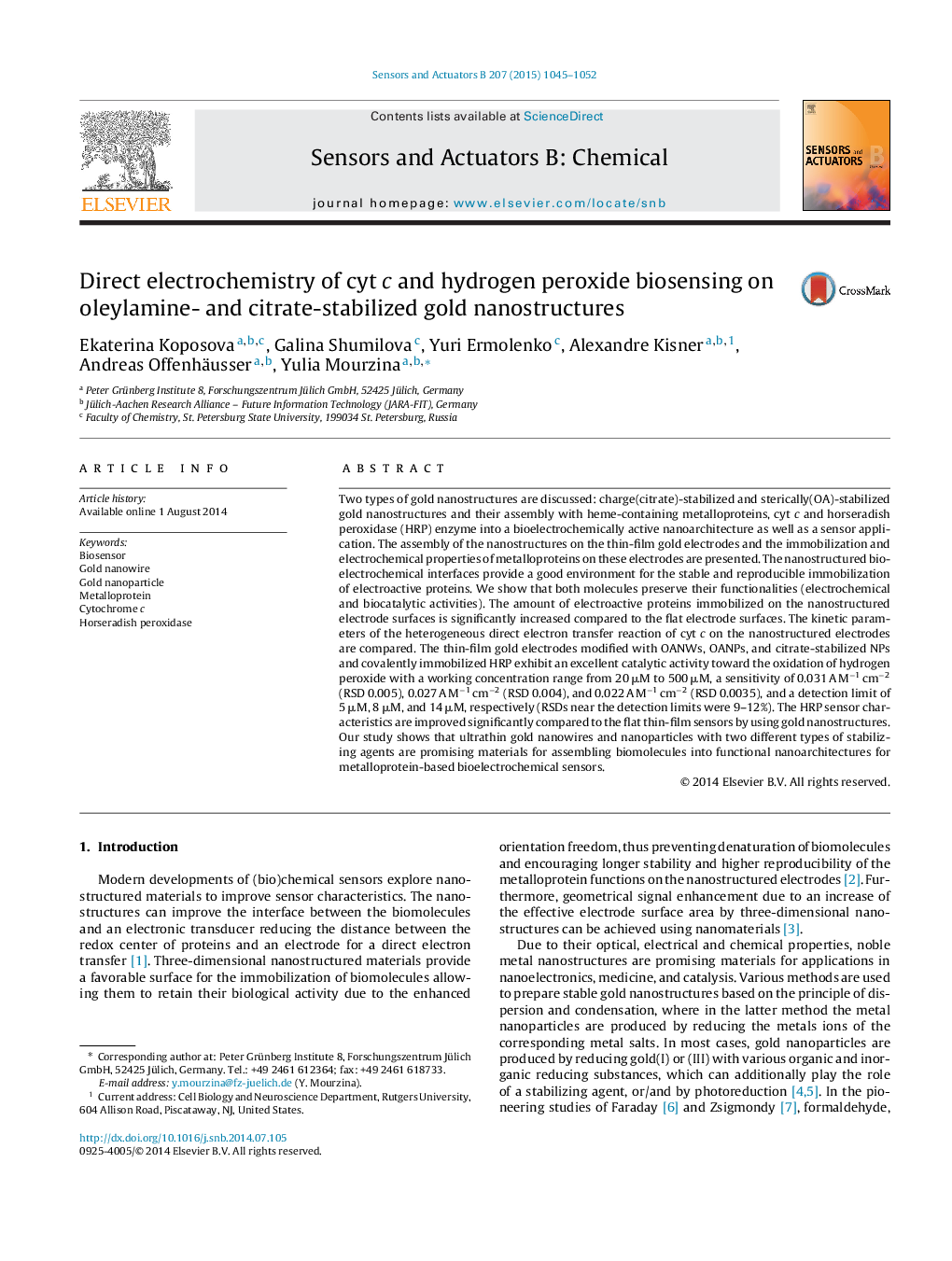| Article ID | Journal | Published Year | Pages | File Type |
|---|---|---|---|---|
| 742526 | Sensors and Actuators B: Chemical | 2015 | 8 Pages |
•Two types of gold nanostructures: charge(citrate)-stabilized nanoparticles and sterically(OA)-stabilized nanoparticles and nanowires are assembled on electrodes.•Immobilization and electrochemical properties of the heme-containing metalloproteins cyt c and oxidoreductase enzyme HRP.•Nanostructured interfaces provide a good environment for stable and reproducible immobilization of electroactive proteins.•Enhancement of the electrochemical signal due to a greater electroactive surface area of the gold nanostructures.•The HRP sensor characteristics for biocatalytic reduction of H2O2 are improved compared to a thin-film HRP sensor by using gold nanostructures.
Two types of gold nanostructures are discussed: charge(citrate)-stabilized and sterically(OA)-stabilized gold nanostructures and their assembly with heme-containing metalloproteins, cyt c and horseradish peroxidase (HRP) enzyme into a bioelectrochemically active nanoarchitecture as well as a sensor application. The assembly of the nanostructures on the thin-film gold electrodes and the immobilization and electrochemical properties of metalloproteins on these electrodes are presented. The nanostructured bioelectrochemical interfaces provide a good environment for the stable and reproducible immobilization of electroactive proteins. We show that both molecules preserve their functionalities (electrochemical and biocatalytic activities). The amount of electroactive proteins immobilized on the nanostructured electrode surfaces is significantly increased compared to the flat electrode surfaces. The kinetic parameters of the heterogeneous direct electron transfer reaction of cyt c on the nanostructured electrodes are compared. The thin-film gold electrodes modified with OANWs, OANPs, and citrate-stabilized NPs and covalently immobilized HRP exhibit an excellent catalytic activity toward the oxidation of hydrogen peroxide with a working concentration range from 20 μM to 500 μM, a sensitivity of 0.031 A M−1 cm−2 (RSD 0.005), 0.027 A M−1 cm−2 (RSD 0.004), and 0.022 A M−1 cm−2 (RSD 0.0035), and a detection limit of 5 μM, 8 μM, and 14 μM, respectively (RSDs near the detection limits were 9–12%). The HRP sensor characteristics are improved significantly compared to the flat thin-film sensors by using gold nanostructures. Our study shows that ultrathin gold nanowires and nanoparticles with two different types of stabilizing agents are promising materials for assembling biomolecules into functional nanoarchitectures for metalloprotein-based bioelectrochemical sensors.
